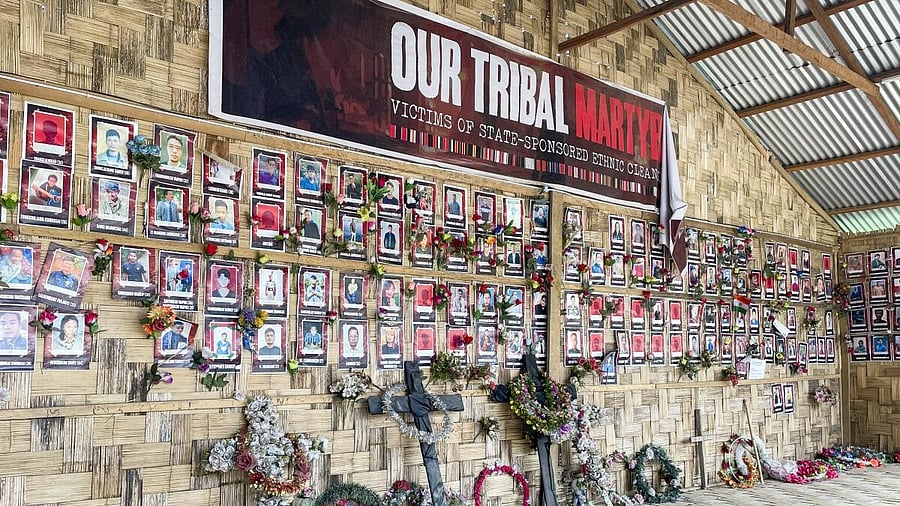
Woman making baskets to earn a living at a relief camp in Imphal.
Credit: PTI Photo
It is rare in independent India’s 76-year history for civil strife to have continued in a state for a year with no serious intervention by the Centre to douse the fires. A year has gone by since the eruption of Manipur’s ethno-religious conflagration. Over 220 civilians have died in the violence, women have been the targets of sexual violence, and over 60,000 have been displaced from their homes and are living in relief camps. Churches have been set ablaze. It is almost as if Delhi does not care if the people in the state live or die. The geographical location of the state, in India’s North-East, has made the violence look remote, even though serious incidents of violence continue to occur. The only time the nation was shaken, briefly, was when it emerged through a video that three women had been gangraped and paraded naked by a mob. It took more than a month for information on the horrific incident to filter out of the state as internet communications had been banned there. Early in the conflict, armouries were looted as the state police stood by. On both sides, people are armed to the teeth.
The BJP rules the state. That is the only plausible explanation why the Biren Singh government has not been sacked yet. Chief Minister Singh’s partisan role in the conflict, in which the minority, mainly the Christian Kuki-Zo community, and the majority Meitei are engaged in cycles of violence and revenge against each other, exacerbated the situation. The fault-lines in the state have run deep for long but this is the first time in several decades that they have erupted with such severity. It is egregious how much of its agency the state government has willingly handed over to the Arambai Tengol, a radical Meitei outfit.
After being forced by the Opposition through a no-confidence motion to speak on the violence engulfing Manipur last August, Prime Minister Narendra Modi broke a three-month silence on the issue, only to blame the previous Congress government for the problems of the state, and said his government would restore peace soon. Just before the first phase of polling in which voting for the two Lok Sabha constituencies in the state took place, Modi told the Assam Tribune newspaper that “timely intervention” by the government had led to a “marked improvement” in the situation. But the violence on election day on April 19 belied that claim. The government has come up with no solution other than to fence the border with Myanmar, a self-defeating proposition. It implies that the trouble-makers in Manipur belong only to the minority Kuki, and that they had come from across the border. The conflict in Manipur cannot be wished away with blithe statements. Its resolution will need more sagacity than the political leadership has shown thus far. Unless, as has been conjectured by observers, Manipur was meant to burn as a laboratory for majority vs minority conflicts.
